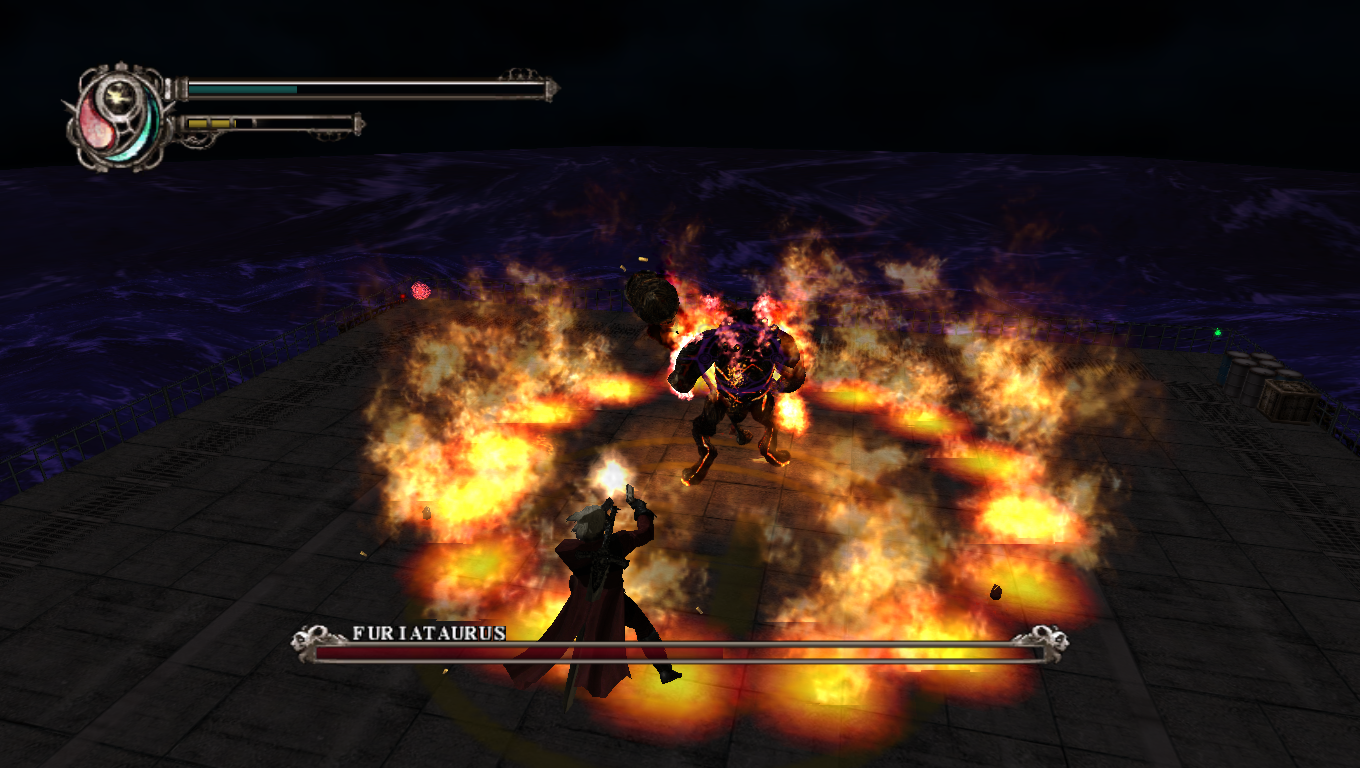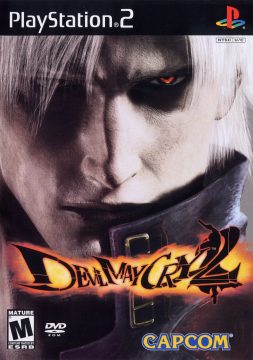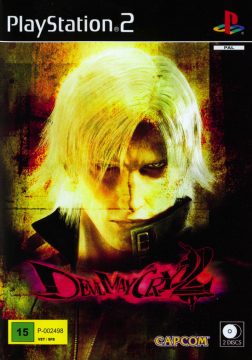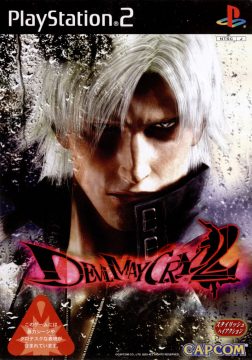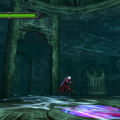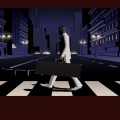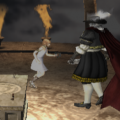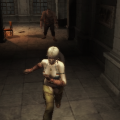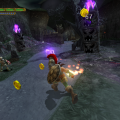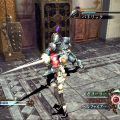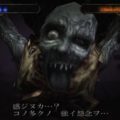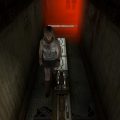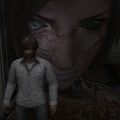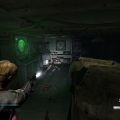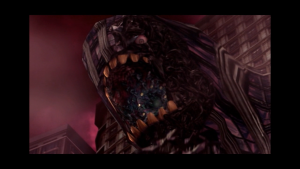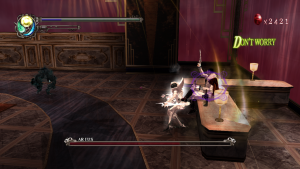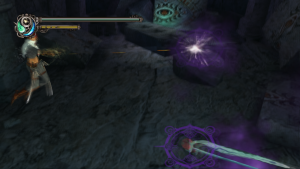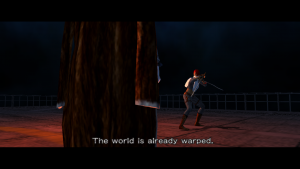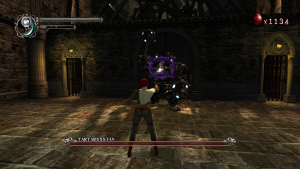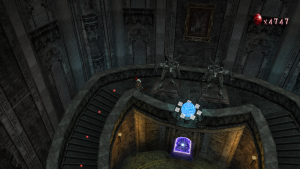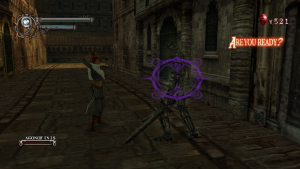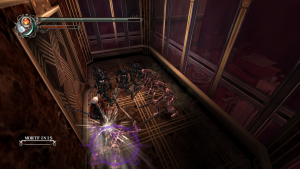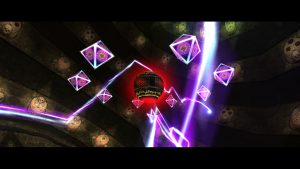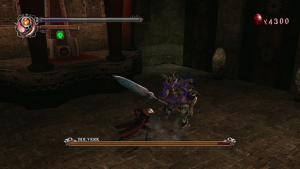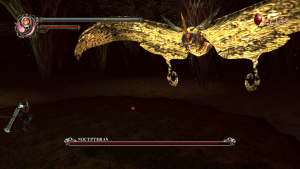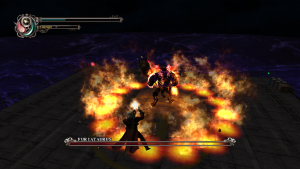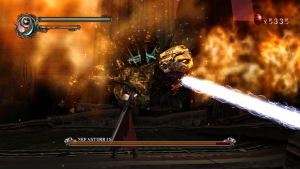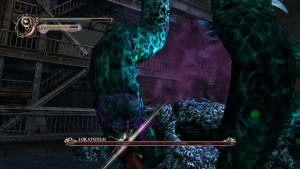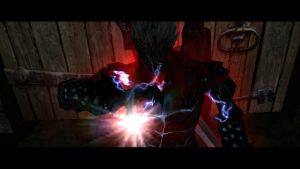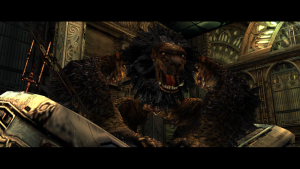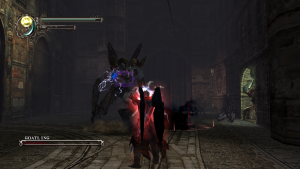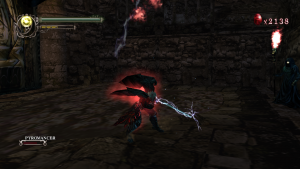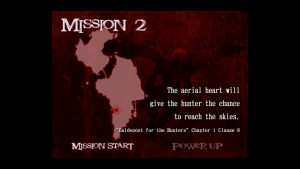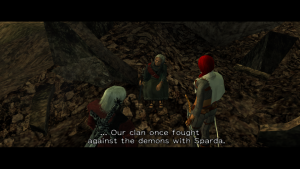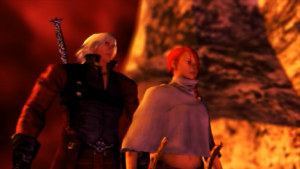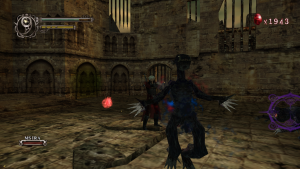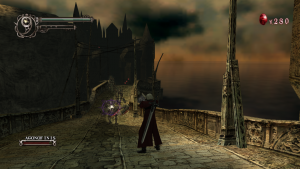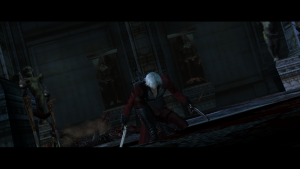Devil May Cry 2 might be one of the worst sequels in history of gaming. That needs to be said right now. It’s not a game devoid of merit, but so much went wrong that it’s impossible to ignore the reality of what this really is when looking at it with modern eyes. When it first released in 2003, everyone agreed it wasn’t as good as the first game, but it was still met in a fairly positive light. Time has been incredibly unkind to DMC2, not only because what people expect from a 3D action game has radically changed, but because playing the first, second, and third back to back really highlights just how poorly conceived and developed this game really was.
As mentioned before, Hideaki Itsuno is technically the second director for the game, but nobody knows who the first was outside of Capcom. The mystery director wasn’t given credit for their work, and all we have to go on is the talk around how poor the fruits of their labor really were. Itsuno came on halfway through, according to him, to finish the project and salvage what he could. Kamiya wasn’t brought back either, and it’s not known if it was his choice or a call by Capcom (though leaving the series after the first installment did not stop him from inserting lore in a Viewtiful Joe port and later Bayonetta). What this meant is that the people in charge of the project were either incompetent or alien to what the original creator envisioned DMC as. The game’s producer, Tsuyoshi Tanaka (who would return to this role in 3), described a focus on making the game bigger than the first, taking into account player feedback and changing systems to make a more exciting action game. Areas became more open, the camera was changed to focus on creating exciting action shots, puzzles were downplayed significantly, and the new character Lucia had her own campaign alongside Dante’s to make up for Trish not being playable in the first game.
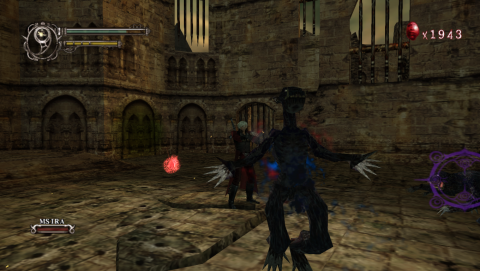
On paper, this is all great. In practice, things did not pan out as hoped. You can instantly tell something is wrong within the first minute of Dante’s story, as there is no longer a taunt button, a central mechanic in the series for increasing your style, and his base combos are very different. Dante’s stinger now takes an entire second to come out and has no sense of impact, and he has a bizarre air kicking combo replacing his helmsplitter, but only when you’re attacking while holding down the lock on button. More importantly, his guns are all insanely overpowered. Instead of being supplements to combos, his handguns now do much more damage, can stun lock enemies, and even launch them into the air. The charge shot move has also been removed, so you can just hold down the fire button and shoot forever with any gun with fast fire rate. It’s entirely possible to win most fights just holding down the gun button, even with Lucia’s equally overpowered throwing knives, and the chance of you being hit is almost null. Add in the large and empty areas, camera that constantly obscures how much of the area you can see, and messy enemy AI that refuses to get close to you most of the time and ruin most chances to build style, and you have yourself a very different game in all the worst ways.
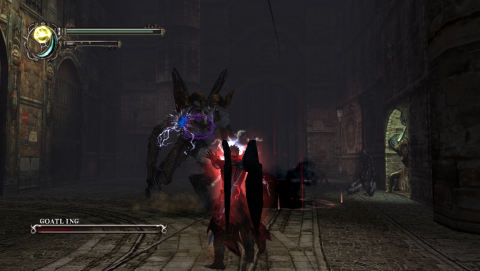
The upgrade system has been changed so much that you can no longer actually unlock new moves. Instead, you just power up your swords (which all have the exact same combos and moves) and fire arms so they do more damage, which is necessary so fights don’t last forever. Most every enemy is now a damage sponge, and the bosses get this worst, complete with constantly repeated moves that make it incredibly unsafe to go near them for melee damage. The worst fight in the whole game is easily the infested chopper, a helicopter possessed by a demon parasite that has multiple escape sequences with very wonky platforming that ends with a battle on a skyscraper roof where it never gets in melee range, turning the entire fight into holding down the gun button with your handguns until it dies, sometimes jumping out of range of its missile attack. You ever hear of Deep Hurting? It was a concept from Mystery Science Theater 3000 describing scenes that refused to ever end, where nothing of significance or enjoyment happened. The infested chopper fight is that and then some.
The lock on doesn’t help either. A soft lock is always on, like it was in the first game, but because the levels are so huge now, it becomes a huge issue when you’re trying to hit switches because your sword attacks often just swing in a completely different direction than where you’re facing, and you often can’t actually see the enemy you’re targeting. The dodge button, newly added for this game, is a very mixed bag as well. There are clearly bosses and fights where the dodge is central to thriving, resulting in the rare moments of fun here, but it also goes nutty when you’re near a wall, auto doing a ridiculous Matrix style wall run that lasts way too long and has almost no real use for the vast majority of the game. It often just breaks the flow of combat – if such a thing existed in this game. Animations sometimes take too long, and large enemies often get theirs done far too fast, made worse by the incredibly slow recovery speed after a knock down if you don’t hit the dodge button on landing, not to mention how far you get knocked back. See ya, style ranking!
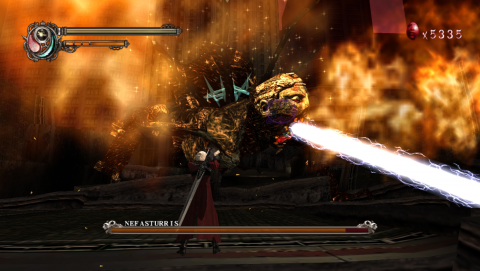
And that doesn’t even get into the pointless devil trigger customization. Both Dante and Lucia have three slots on their amulets (it is not explained what these amulets are) that you can install upgrades into for your devil trigger. One slot is for elemental variants, which only really changes your air attack and gun move, another changes your movements (dashing or flight), and the last gives a passive bonus like health regeneration or extra damage output. However, building devil trigger takes way too long, and there’s rarely ever a moment in the game you need it other than to speed up damage sponge boss fights. It’s not a bad idea, but it adds so little. Lucia’s campaign also feels like a complete afterthought, overall more enjoyable because it’s shorter and Lucia feels peppier than Dante, but most of her missions are just recycled from Dante’s story. Her biggest new addition is a swimming mission, and yes, it is bad, though not as bad as they were in DMC1, thanks to sticking to third person perspective.
The design of this game is an absolute mess, but the strangest thing is that great mechanics from DMC3 can see their start here. Along with dodging, you can real time switch between all your guns with the press of a button, a concept later extended in DMC3 with real-time weapon and gun switching. The poor attempts at air combos ends up becoming Aerial Rave for a Rebellion swordmaster move in DMC3, one of the best basic moves you can use for building style. Even some of Dante’s pointless handgun moves also get reused and tweaked to actually be useful in DMC3 in his gunslinger style. As bad as this game is, it was a central building block for DMC3, getting the team to understand what didn’t work and how to make what they did here function better.
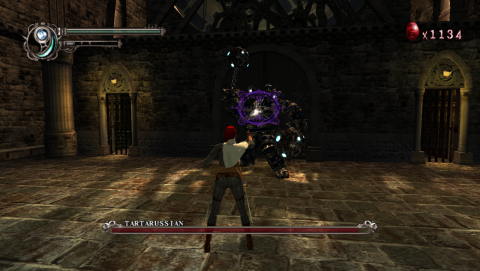
This goes for the narrative as well, which remains a skeleton of a potentially good story due to the horror tale of the game’s development cycle. Lucia’s inner struggle with her true nature when she discovers who she really is is vastly more interesting than Trish’s conflict even in this broken and empty structure, and the main villain being a human man trying to become a demon god has vast potential they later explored differently in 3. Even Argosax, the big bad demon of the game, is vastly more interesting than Mundus ever was just by virtue of what little you see and hear about it. You can see concepts explored better in later releases everywhere, even down to the evil businessman concept used more fully in DmC. Of course, there’s barely any cutscenes to actually explore the story or any of the ideas presented, wasting all potential shown. Worse yet, the game completely rewrites and botches Dante’s entire character.
Instead of being a self-loving goof with a good heart and terrible sense of what cool is, Dante has been rewritten to be a stoic, almost never vocal edge-lord cool guy. The few lines he gets are terrible, and his new coin flipping obsession is one of the most poorly handled quirks they could have given him. It’s like they wanted to show him in a darker, more worn out light, but couldn’t fully commit to this and just ended up having the Dante we all already knew just pretending to be someone else for no reason. He’s not the only one to suffer from a lack of personality either, as almost every single boss in the game doesn’t actually get an introduction or even a voice, including one who fought Sparda in the past and should have been an all time great for the whole franchise.
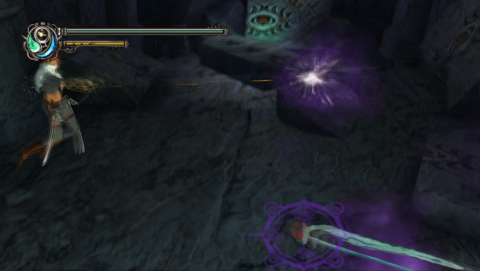
The music and aesthetics are at least good. Masato Kouda returns from the first game’s soundtrack before bowing out of the series, while Satoshi Ise (who would compose for 3) and Tetsuya Shibata (who would also stay until 4) help out. All three do great work, making catchy instrumental rock pieces, the highlights including The Despair Embodied and Shoot the Works. The whole look of the game is like an extremely gothic Resident Evil, with some of the best boss designs in the entire franchise. Bolverk and Nefasturris are easily the stand outs, the animated skeleton of a large god with his two hunting wolves and a giant born from a piece of city itself, with Bolverk managing to have one of the few boss fights in the game that manages to be engaging on some level (the other being Dante’s final boss). Even Dante’s outfit is a pretty slick, skin tight, red and black mix that stands out among his many other looks, arguably one of his best designs overall. It makes one wonder what DMC2 could have been if things went as planned.
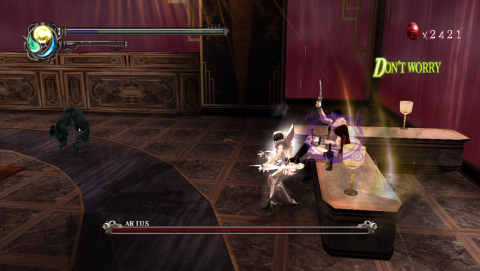
Still, the final product was a disaster. Despite the bits and pieces of quality, the whole package is a joyless slog that barely starts to come together in the final missions. Still, there wasn’t a great understanding of what quality 3D action games could be at the time, so DMC2 still managed to sell fairly well and kept the series afloat, though opinion of it quickly but quietly dropped. However, Itsuno wanted to correct the mistakes he both made and inherited here, so for the next game, he created a prequel that would return to the structure of the original game. That game ended up being one of the best and most defining action titles ever made in gaming history.
Note: Screenshots for Devil May Cry 1, 2, and 3 were taken from PC releases of the HD Collection. Said collection is fairly accurate to the original versions, but there are notable issues, such as FMVs being stretched out and some menu art not being scaled with the new wider screen support.
